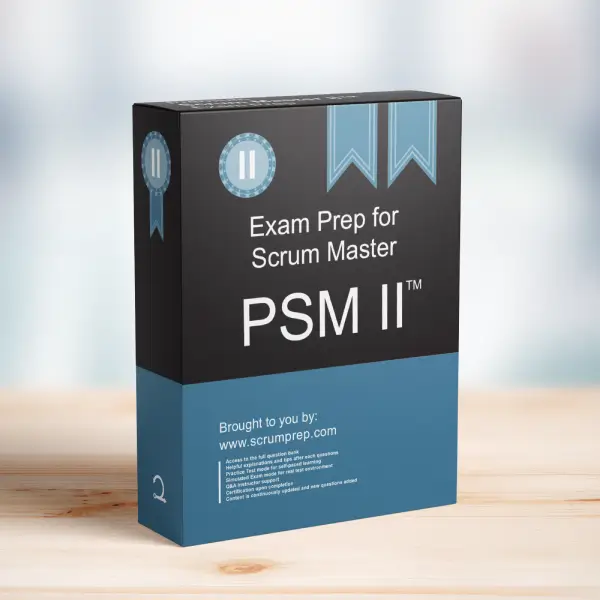Definition of Ready and Its Impact on Scrum Teams
The concept of a “Definition of Ready” (DoR) can be helpful in certain contexts within Scrum, but its necessity and benefits can be debated. This article will address a specific exam question related to the use of a DoR when multiple Scrum Teams work on the same product.
Exam Question
True or False: When multiple Scrum Teams work on the same product, they should employ a “Definition of Ready” to maximize their velocity. A “Definition of Ready” ensures that Sprint Planning can end within its timebox. This has a positive effect on the team’s velocity, as the team will have more time for productive work. (choose the best answer)
- A. True
- B. False
Correct Answer
B. False
Explanation
Why B is Correct
The statement is false because while a “Definition of Ready” (DoR) can be useful for ensuring that Product Backlog items are well-prepared for Sprint Planning, it is not a mandatory practice in Scrum, and it does not inherently maximize velocity. The primary focus in Scrum should be on the “Definition of Done” (DoD), which ensures that the Increment is of high quality and potentially releasable.
Key Points
- Definition of Ready (DoR): While having a DoR can help ensure that Product Backlog items are adequately prepared before being pulled into a Sprint, it is not a requirement in Scrum. The Scrum Guide emphasizes the importance of having a clear and shared understanding of what “Done” means, but it does not mandate a DoR.
- Sprint Planning: The goal of Sprint Planning is to determine what can be delivered in the upcoming Sprint and how that work will be achieved. Ensuring items are ready can aid this process, but the primary driver of productivity is how well the team collaborates and adheres to Scrum principles, not merely the existence of a DoR.
- Velocity: Velocity is a measure of the amount of work a team completes in a Sprint, but it is not the ultimate goal. The focus should be on delivering valuable, high-quality Increments. A DoR might streamline Sprint Planning, but it does not directly increase productivity or velocity. Teams should focus on continuous improvement and delivering value rather than solely on velocity.
Responsibilities in Scrum
- Product Owner: Ensures that Product Backlog items are well-refined and ready for consideration in Sprint Planning. This can involve collaboration with stakeholders and the Developers to achieve a shared understanding of the requirements.
- Scrum Master: Facilitates the Scrum process, ensuring that the team adheres to Scrum principles and that Sprint Planning is effective. Helps the team to continuously improve their processes, which can include adopting practices like a DoR if it adds value.
- Developers: Collaborate to understand and refine Product Backlog items before Sprint Planning. They ensure that the items they select for the Sprint are well-understood and can be completed within the Sprint.
Relevance to the PSM II Exam
Understanding the optional nature of a “Definition of Ready” and its impact on Scrum practices is essential for the PSM II exam. This knowledge demonstrates an advanced understanding of Scrum principles and the ability to discern which practices are beneficial in different contexts.
Key Takeaways
- The “Definition of Ready” is not a mandatory practice in Scrum.
- Ensuring items are ready can aid Sprint Planning but does not inherently maximize velocity.
- The focus should be on delivering high-quality, valuable Increments and continuous improvement.
Conclusion
While a “Definition of Ready” can be beneficial in ensuring that Product Backlog items are well-prepared for Sprint Planning, it is not a mandatory practice in Scrum. The primary focus should be on the “Definition of Done” and the quality of the Increment. By understanding this distinction, Scrum Teams can better align their practices with Scrum principles and focus on delivering value. For comprehensive preparation and practice exams, check out PSM II Exam Prep to enhance your understanding and application of Scrum principles.


